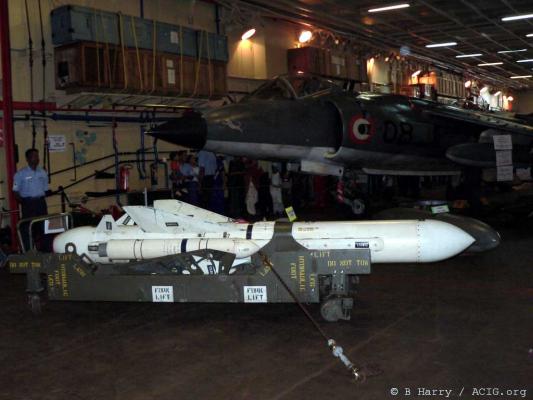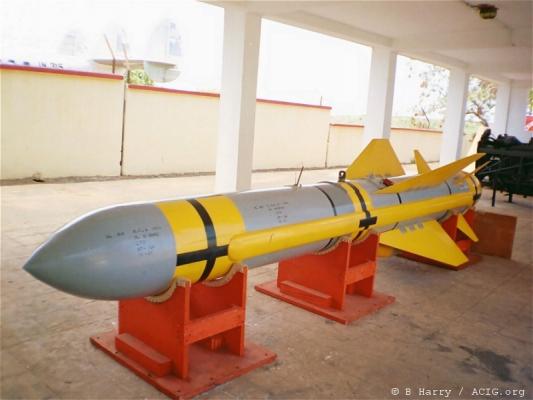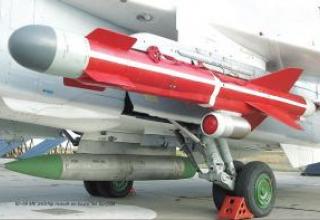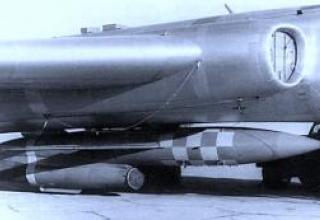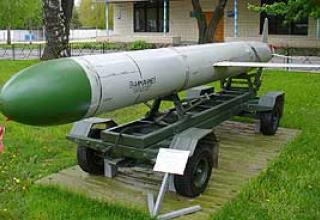The Sea Eagle is a mid-range all-weather airborne anti-ship missile designed to engage a wide range of surface targets.
The missile was developed by BAE (British Aerospace Dynamics). The contract for the development of the second generation aircraft anti-ship missile, originally designated P.3T, was issued by the British Ministry of Defence in 1979.
The new missile was adopted for armament in 1986. and was intended to replace missiles Martel in the weapons of Bukanir, Sea Harrier-Frs Mk51, Tornado-GR1, Jaguar-IM, Nimrod, Sea King-Mk248 helicopters.
In 1983, the Bukanir Frs Mk51, Tornado-GR1, Jaguar-IM, Nimrod, Sea King-Mk248. UAE announced the beginning of work on the development of a sea-based version of the Sea Eagle under the designation P.5T. P.5T was intended to be placed on surface ships with a displacement of more than 200 tons using Sea Dart launchers. The first successful launch of the P.5T was made in 1987. However, the British Navy did not accept the sea-based missile, its place was taken by the Harpoon SLR.
The Sea Eagle is in service with the British, Indian and other Air Forces.
Composition:
The Sea Eagle rocket (see diagram) is made according to the normal aerodynamic scheme.
The missile's turbojet engine is the TRI 60-1 067, designed by Microturbo. The program of engine production in the volume of 523 pieces was carried out in the UK by Microturbo Ltd, completed in 1992. Small single-shaft engine Microturbo TRI 60-1 is equipped with a three-stage axial compressor and a ring combustion chamber. The TRI 60 develops a static take-off thrust of 3.5 kN at its own weight of 49 kg, has a maximum lateral dimension of 330 mm and a length of 749 mm. The engine is started by a pyrostarter.
Aiming at the target is made by means of combined system: inertial - on the marching section of the trajectory and active radar CNS - on the final one. The homing head is developed by the Italian company Marconi Avionics Ltd. and detects targets with EPR over 100 m2 at a range of about 30 km.
The combat unit is equipped with advanced RDX-TNT explosives. The design is designed to penetrate the light armor of the ship and blow up the combat unit inside its hull with slowdown. According to Western experts, the explosion produces a powerful shock wave impulse, destroying the bulkheads of several adjacent compartments. The effectiveness of the combat charge is complemented by the ignition of fuel remnants.
During the flight of the aircraft carrier to the target from its fire control system to the BCVM missile receives information about the course and speed of flight, and 2 seconds before starting the corrected target data (type, range, coordinates). After separation from the aircraft and the launch of TRD missile is reduced to extremely low altitudes and flies at a cruising subsonic speed (0.85 M). The rocket can be launched to a flight altitude of at least 30 m. The maximum altitude is limited only by the capabilities of the carrier and its target detection equipment. The minimum firing range is determined by the time required to set up the BC and start the guidance system.
The missile's altitude is controlled by a radio altimeter, which uses advanced signal processing techniques and methods that make it difficult to detect the missile by the parasitic side lobes of the directional diagram.
When a long-range target is attacked at long range, a short-range altitude gain is made to correct the inertial guidance system with the activation of the CNS. The head is then turned off and the missile is again reduced to an extremely low altitude. Re-activation of the SOS to a constant operating mode is carried out at a distance of 15-18 km to the target. The information is processed in the BCVM, which provides a choice of programmed (by radar characteristics or position in the warrant) target.
The smokeless and relatively cold TRD exhaust, combined with stealth elements such as directional directional radio altimeter patterns and CNS antennas, reduce the probability of missile detection. To improve the survivability of the missile and to reach the target from different directions, the guidance system can be programmed to perform vertical and horizontal manoeuvres before launch.
Issue of external target designation provides aircraft long-range radar detection and control "Nimrod". In this case, the "Sea Eagle" missile has an over-the-horizon range.
Characteristics:
| Length, m | 4.10 |
| Diameter, m | 0.40 |
| Weight, kg | 600-730 |
| Wingspan, m | 1,20 |
| Maximum flight range, km | 110 |
| Flight speed, M. | 0.9-1.0 |
| Guidance System | INS+ARGSN |
| Fighting unit | Blast |
| Weight of combat unit, kg | 230 |
Testing:
Currently, there are no reliable data on the use of the Seacat complex, which is part of the Iranian frigates Vosper Mk 5, during the Iran-Iraq war, so the only confirmed case of combat use of this complex should be considered the Anglo-Argentine conflict of 1982. By that time, the Seacat SAM system was an outdated system, but it was part of the air defense assets of a large number of British ships involved in the conflict (for example, the Hermes aircraft carrier equipped with GWS-22 systems).
During the conflict, there were numerous uses of various modifications of the Seacat SAM system. However, despite the fact that the official British statistics record a number of shot down Argentine aircraft, the real combat effectiveness of the complex was low. It should also be noted that the British frigate "Ardent", sunk by Argentine aircraft as a result of a bomb attack, was armed with GWS-24 "Seacat" SAM system. The high reliability of the Seacat missile and the whole complex can be attributed to the positive aspects. In particular, the fire control system of the complex reliably operated in narrow strait zones, against the background of heavily crossed rocky coastline, in conditions of powerful radio electronic interference, ie where complexes with radar guidance principle were ineffective.
Sources:
- Б.И. Радионов Н.Н. Новиков "Крылатые ракеты в морском бою",1987г.
- http://www.acig.org/exclusives/viraat/PICS/Sea-eagle_drill.jpg
- http://www.acig.org/artman/uploads/seaeagle.jpg
